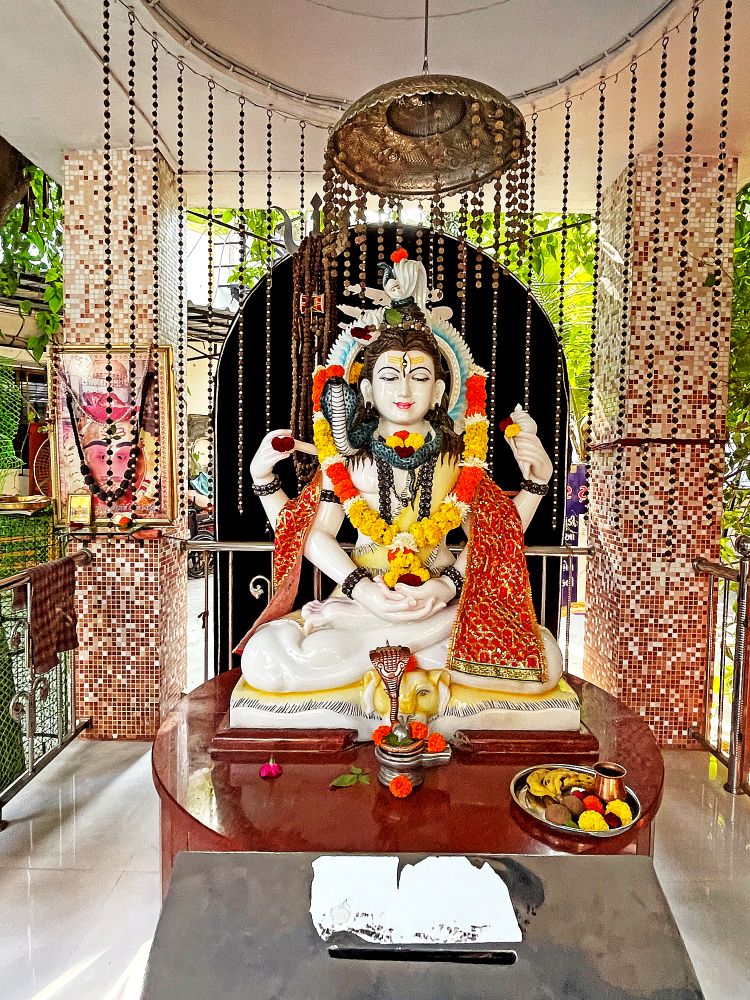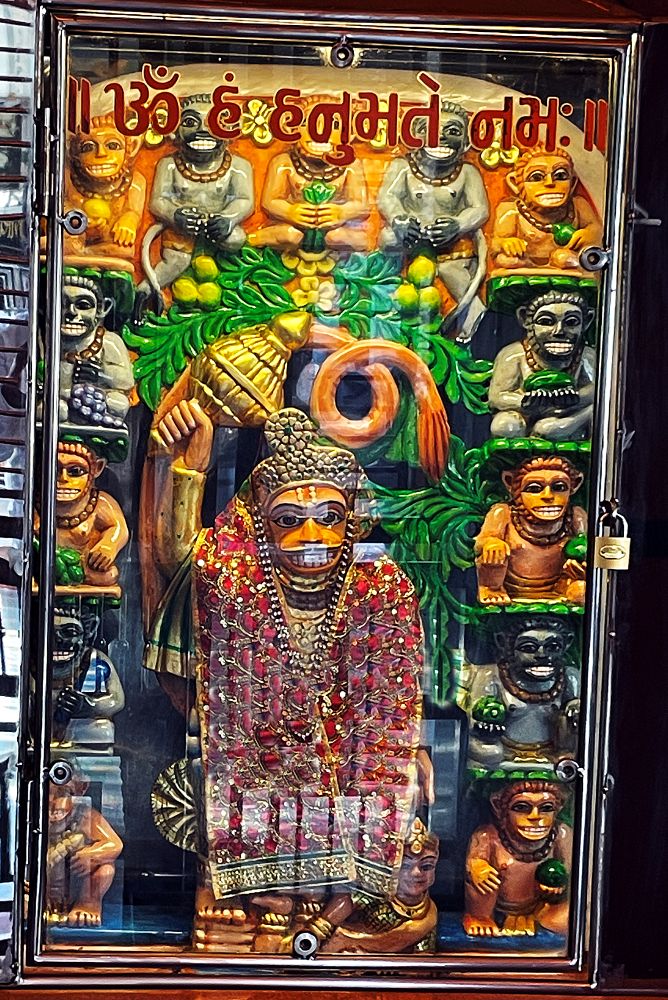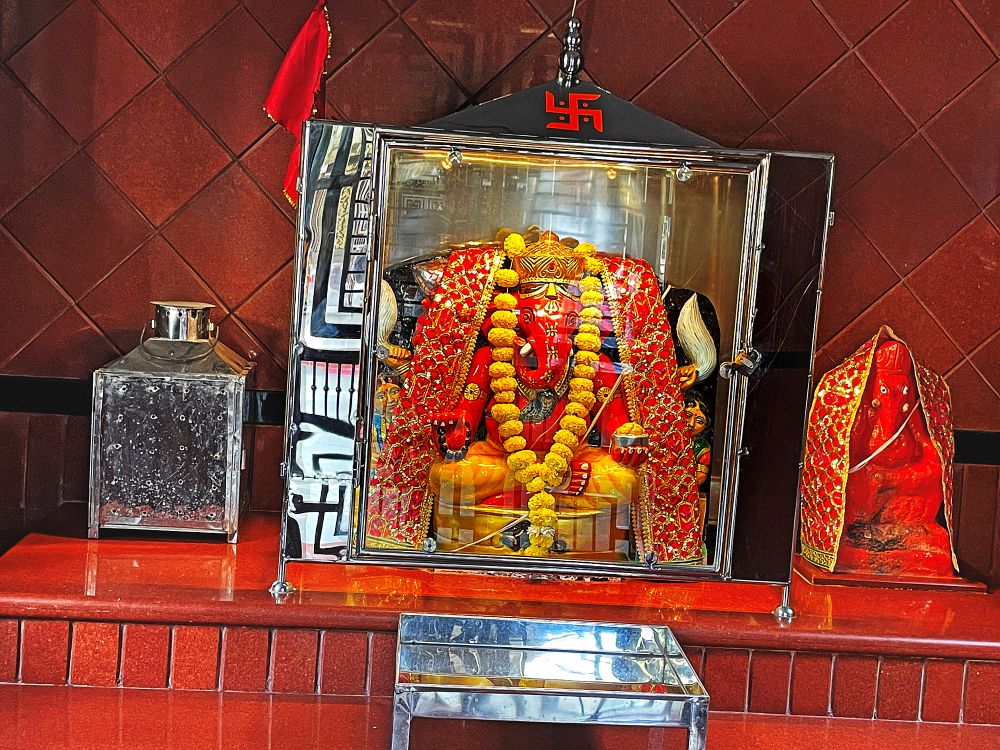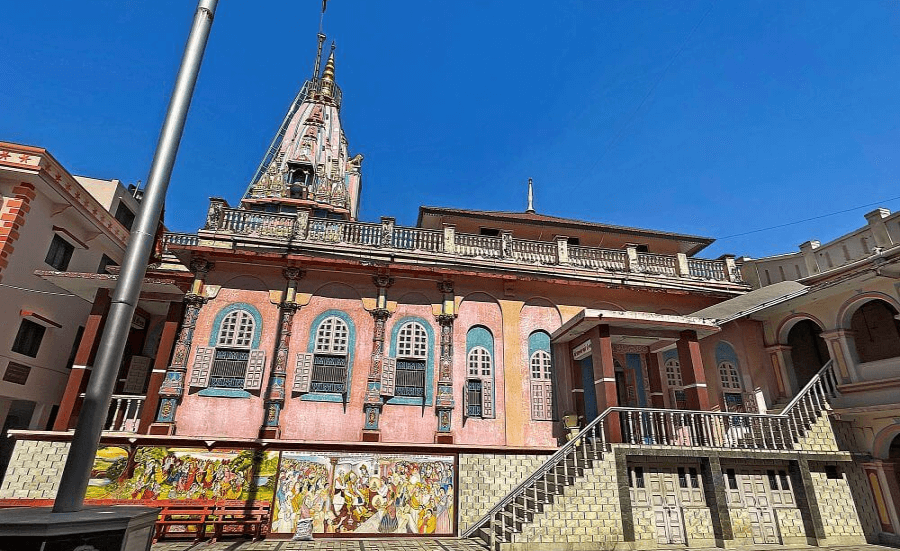
 Located approximately 4 km from Surat’s ancient fort, the Jai Gangeshwar Mahadev Temple is situated along the banks of the Tapi River in Adajan. Devotees believe that this temple houses a self-manifested (swayambhu) and spiritually awakened Shivling. It is said that offering prayers here fulfills all desires, drawing hundreds of devotees daily. The temple is especially crowded during Mahashivratri and the month of Shravan, with devotees flocking for darshan.
Located approximately 4 km from Surat’s ancient fort, the Jai Gangeshwar Mahadev Temple is situated along the banks of the Tapi River in Adajan. Devotees believe that this temple houses a self-manifested (swayambhu) and spiritually awakened Shivling. It is said that offering prayers here fulfills all desires, drawing hundreds of devotees daily. The temple is especially crowded during Mahashivratri and the month of Shravan, with devotees flocking for darshan.
According to a popular legend, this area was once covered with dense forests, and a few farmers cultivated the surrounding land. The spot where the temple now stands was an open area to the north, often frequented by children for playing. On 19th October 1999, a group of children were playing cricket when their ball rolled into the area where the temple now exists. While searching for the ball, one child noticed a snake’s shed skin partially buried in the ground. Frightened, the child called his friends. On closer inspection, they decided to dig the ground around the shed skin and unearthed a circular stone formation. Astonished, they informed the elders in the area. Further excavation revealed a swayambhu Shivling. Since then, devotees have been visiting this site, and over time, a temple was constructed to house the Shivling.
Adajan, now a bustling suburb of Surat, houses this temple along a busy road, yet the temple premises offer a tranquil respite.  The striking Urushringa-style spire (a primary tall shikhara flanked by smaller replica spires resembling mountain peaks) immediately catches the eye. The temple complex has paved pathways and is adorned with a few trees, including a sacred fig tree (Umber), under which stands a shrine dedicated to Dattatreya. Behind this shrine, a large picture depicts 42 spiritual leaders, including Adi Shankaracharya, Guru Nanak, Chaitanya Mahaprabhu, Swami Vivekananda, Jalaram Bapa, Mahavir, Gorakhnath, Kabir, Tulsidas, Ramanuja, and Ramakrishna Paramhansa.
The striking Urushringa-style spire (a primary tall shikhara flanked by smaller replica spires resembling mountain peaks) immediately catches the eye. The temple complex has paved pathways and is adorned with a few trees, including a sacred fig tree (Umber), under which stands a shrine dedicated to Dattatreya. Behind this shrine, a large picture depicts 42 spiritual leaders, including Adi Shankaracharya, Guru Nanak, Chaitanya Mahaprabhu, Swami Vivekananda, Jalaram Bapa, Mahavir, Gorakhnath, Kabir, Tulsidas, Ramanuja, and Ramakrishna Paramhansa.
Adjacent to this shrine lies a Siddhivinayak Temple. To the left of the Gangeshwar Mahadev Temple is the Kashtbhanjan Hanuman Temple, housing a glass-enclosed idol of Hanuman lifting his mace. Beside this idol, there are smaller statues of Hanuman’s attendants, both male and female. Adjacent to these is a miniature idol of Hanuman in the iconic pose of lifting the Dronagiri Mountain, a depiction of his valiant act from the Ramayana. Additionally, there is a small shrine for Shiva featuring a meditative marble idol of Lord Shiva seated on an elevated platform. The temple complex also includes a gaushala (cow shelter).
The Gangeshwar Mahadev Temple features an open assembly hall (sabhamandap) and a sanctum (garbhagriha). Within the sabhamandap stands a beautifully carved black-stone idol of Nandi (Shiva’s bull), alongside a small turtle idol. The spacious sanctum houses the self-manifested Shivling, which is seated in a seven-sided golden shalunka (base). A metallic Naga (serpent) shelters the Shivling.  Behind the Shivling, on a high throne along the rear wall, rests a graceful idol of Parvati Mata.
Behind the Shivling, on a high throne along the rear wall, rests a graceful idol of Parvati Mata.
Devotees believe that offering sincere prayers to Lord Gangeshwar fulfils their desires. The temple sees a significant influx of visitors, especially on Mondays. Various daily rituals include Rudrabhishek, Laghu Rudra, Shiva Chatur Prahar Pooja, Shiva Bilva Archana, Shiva Laghu Pooja, and Shiva Panchvaktra Pooja. Special events during Mahashivratri attract hundreds of devotees, featuring rituals like Bhasma Aarti. The temple also hosts significant celebrations during Shravan, with hundreds visiting every Monday. Other festivals like Ganesh Chaturthi and Gokulashtami are celebrated with enthusiasm.
The Jai Gangeshwar Trust oversees the temple’s administration, including managing the gaushala and conducting several social welfare programmes.



